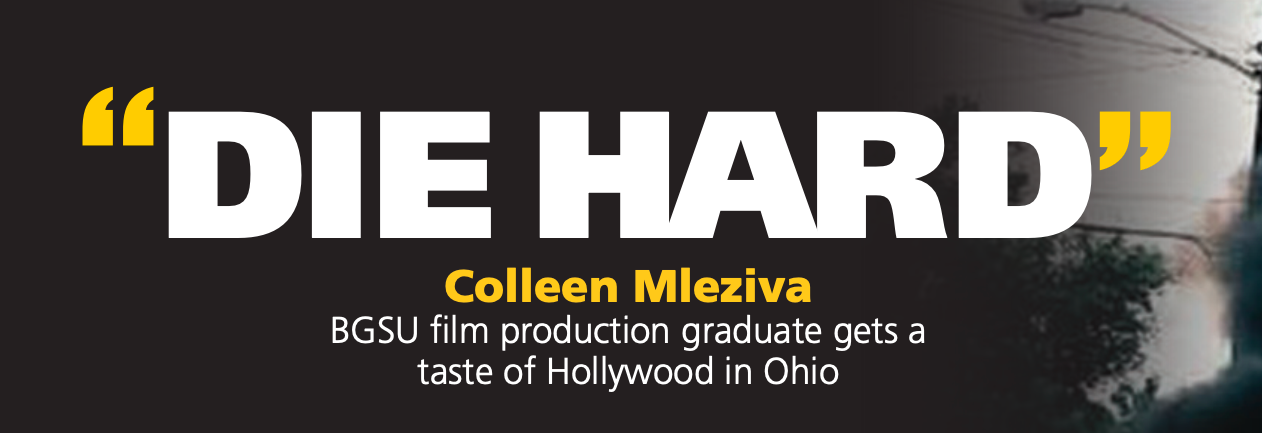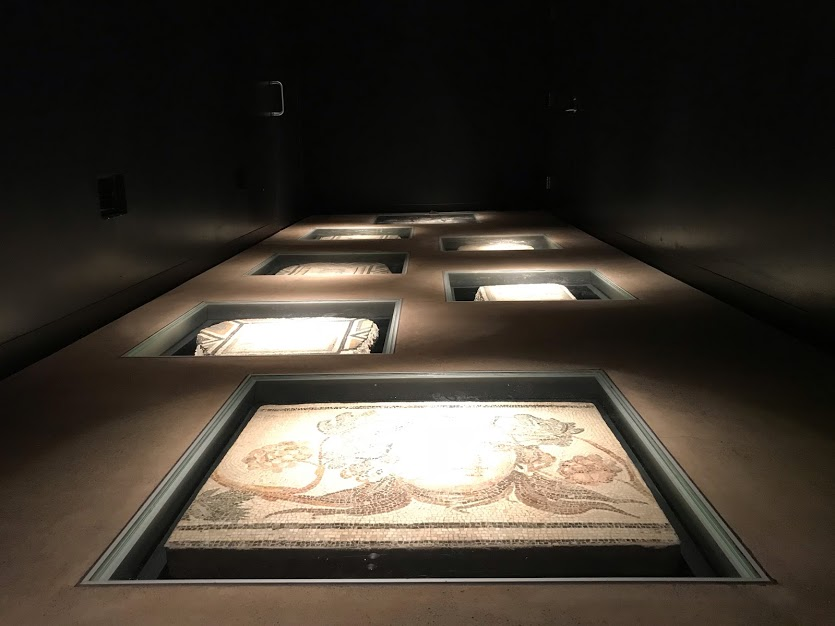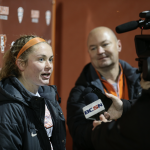
By Jennifer Verzuh | Spring 2017
Bruce Willis can’t seem to get enough of Ohio. He’s currently shooting his upcoming film “Acts of Violence” with director Brett Donowho in Cleveland, and is expected be back again in July to begin shooting a second film, “Reprisal” from director Brian A. Miller, according to Cleveland.com.
Willis is far from the only star to make his or her way to the state to work on a film though. Over the summer, Nicole Kidman, Colin Farrell, James Franco, and John Travolta were all spotted working on various projects just in Cincinnati.
Since the Ohio General Assembly created the motion picture tax credit to encourage film production in the state in 2009, major studio feature film productions have been making their way to shoot all or a portion of their scenes.
A few of the more notable titles include the Oscar nominated romance “Carol,” Marvel’s “Captain America: The Winter Soldier,” and the upcoming “The Fate of the Furious,” the eighth installment of the action franchise. Colleen Mleziva, a 2010 University film production graduate, was a crew member on all three of these films, as well as many others that have been shot in the region.
She credits the tax incentives as a big draw for studios and filmmakers that benefits them as well as Ohio. “Any movie that is interested in getting money back when they come to shoot will look at Ohio if it fits what they’re looking for.
For instance, on ‘Carol’ and on ‘Miles Ahead’ Cincinnati was standing in for old school New York City,” Mleziva said. “So it makes it easier for productions shooting
in Ohio that they don’t have to pay to shoot in New York… And they can also get money back by hiring local crew members and using local resources. So it’s kind of a win-win for the movie and for locals.
When movies like Captain America or Fast and Furious come to town, they come to town with a very crew base.
They get put up in hotels, and those hotels make money and then on the weekends they go out to restaurants and bars, and so it’s good for the city.” She also added that the versatile nature of the state, particularly Cleveland, was another factor in attracting large-scale productions.
The versatile nature of the state, particularly Cleveland, was another factor in attracting large-scale productions.
“For ‘Fast and Furious’ Cleveland was supposed to be New York, and then on ‘Captain America’ I believe it was supposed to be DC,” Mleziva said.
So we have kind of a lot of different looks that our city can have.” Professor and filmmaker Lucas Ostrowski agreed that, next to the tax breaks, it’s the variety of landscape and architecture available that’s the biggest benefit for films considering shooting here.
“What makes a production company come here is there’s the access to the lake, there’s access to large cities, there’s the
What makes a production company come here is there’s the access to the lake, there’s access to large cities, there’s the access to rural areas, to what’s been so popular ––the broken down factories.
–– Lucas Ostrowski Professor and Filmaker
access to rural areas, to, what’s been so popular, the broken down factories,” he said. “So it’s become this any town, any city USA kind of look.”
While films do get made here, Ostrowski said, it’s all dependent on what they’re making in Los Angeles, where opportunities for work on feature films is more plentiful.
“The film industry is still always going to be based in Los Angeles,’ he said.
“If there’s any big shoots coming out here it’s coming from LA, so I would say a lot of what’s contained in the Ohio film industry are any films that want to come here to use the tax incentives in addition to independent features, short productions, TV productions, so anything that fills in the gaps and industrial videos.”
On her part, Mleziva says she doesn’t feel any pressure to move to Los Angeles or a bigger market as she is happy with her current situation in Cleveland, and doesn’t finds herself struggling for her work. For film students and those looking to break
into the industry she said she believes there are good opportunities here in Ohio. “It’s a good jumping off point for a lot of people…
It’s a small market, so there’s opportunity for growth, especially on smaller movies they trust you to take a higher position and guide you through that process.
Whereas, if you moved out to Los Angeles, it would be, I think, a harder road because there’s more competition,” Mleziva said. “So I think the smaller market benefits people who want to get into the industry because people here are willing to teach and help you learn and nurture your growth in the industry.”
There’s also a very strong independent film industry in Ohio as well, that thanks to technology becoming better and more affordable is just getting better, Ostrowski said.
“It’s really thriving… There’s a lot of work being made, and there’s a lot of work that looks visually interesting,” he said. “There is an independent scene that just keeps on growing, and within any college town or any major city these independent scenes will be even stronger.”
Alex Goetz, who graduated from the University in 2010, said he’s most drawn to that independent scene. “The independent stuff and going to the film festivals and having to advertise your film and market yourself is something that I’m more interested in than working on a big budget film,” he said.
“I don’t feel any pressure to move to Los Angeles or to a bigger market. I am happy with my current situation in Cleveland, and I don’t find myself struggling for work.”
– Colleen Mleziva
BGSU Film Production Graduate
He noted that thanks to social media it’s easier to connect with other filmmakers and get a crew together, and Ohio’s production scene still being relatively on the smaller side has its advantages for independent filmmakers.
“You can do a lot of stuff for free rather than having to pay a ton to film in areas, and I think that that’s really helpful too. Somebody can easily go and film something in Bowling Green and if the story is really good and it goes to a film festival it can get picked up by Netflix, or Hulu, or anybody.”
In addition to working for the Toledo Zoo in a communications role, Goetz is developing his own freelance production company which will focus on natural history and education called Running Wild Media, and said that if he can make it work here, there’s no excuse for others. “If I can do independent wildlife filmmaking in Ohio, where there’s no wildlife, then I think that somebody should be able to make a short independent film here,” Goetz said.
“It’s kind of you get what you put into it. If you have the passion for it and the drive and you really have a good story that’s really all that you need to get it out there.”









